By Lee Copland, Managing Director, Maxxess EMEA | August 29th, 2023
The labor market’s dynamics in 2023 have undergone rapid transformations. Employers are grappling with a unique challenge: attracting and retaining top talent. While there’s discourse around augmenting pay scales, the real game-changer seems to be a shift in workplace culture.
The Rise of Flexibility
The CIPD (Chartered Institute of Personnel and Development), a renowned London-based HR professionals’ body, has observed that rather than just upping the salary, many organizations are turning towards improved working conditions, particularly emphasizing flexible and hybrid working models.
As employees evaluate job opportunities today, many considerations come into play. Beyond the basic salary, elements like savings from reduced commuting, better time management, and the intrinsic value of work-life balance are becoming paramount.
CIPD’s recent insights reveal a telling picture: a staggering two-thirds of UK employers anticipate hiring challenges in the upcoming six months, with a third predicting these difficulties to be profound. Yet, interestingly, only about a quarter believe that increased wages will alleviate these challenges. Instead, a more significant percentage is focusing on upskilling their current workforce and introducing flexible working conditions.
The Global Transition
Sector-wise, fields such as IT, communications, scientific services, and professional services are progressively adopting flexible and hybrid models. The numbers are especially compelling in countries like the US, the UK, and Canada. Commuting trends also reflect this change, with the UK witnessing a 22% reduction in commuter traffic compared to pre-pandemic times.
Data from city centers and employee sentiment studies further corroborates this trend. In bustling hubs like London, where commuting expenses are relatively high, some stats show a plunge in traffic by over 40%.
This shift isn’t merely a knee-jerk reaction to recent challenges. It’s strategic. The embracement of automated solutions, enhanced access controls, and modern visitor management methods have not only facilitated remote working but also catalyzed overall organizational efficiency. For instance, touchless biometric systems and QR code credentials have simplified site access, merging HR databases and security systems and eliminating the hassles of legacy security measures.
By integrating solutions like SAFR® from RealNetworks with next-gen platforms, organizations are not only bolstering security but also fostering a more interactive relationship with employees. This AI-driven facial recognition technology is not just securing physical sites but also ensuring a safer digital work environment.
Looking Ahead
The emphasis is clear: it’s not just about where and when the work is done but also how it’s done. Tools that promote mutual dialogue between employers and employees, ensuring well-being and efficiency, are gaining traction. Given the persistent staffing challenges, such investments are not just vital for the present but are also a blueprint for the future.

